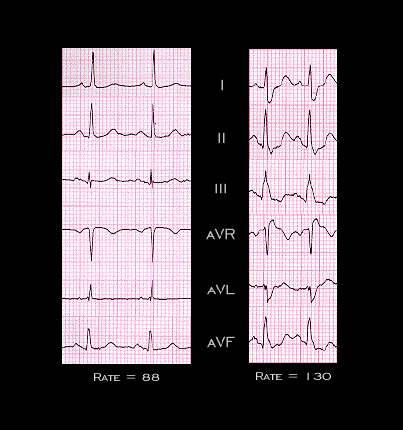
Intraventricular conduction disturbances may be rate dependent and occur only at rapid or slow rates. When they occur at rapid rates, they are referred to as being tachycardia dependent. These ECGs demonstrate tachycardia dependent right bundle branch block. In the tracing on the left, the rate is 88 beats per minute (R-R interval = 0.68 sec.) and the QRS complexes are normal. In the tracing on the right, the rate is 130 (R-R interval = 0,46 sec.) and there is right bundle branch blocks. As emphasized earlier, the initial portion of the QRS complex is not affected by the right bundle branch block. Again, note the secondary T wave changes that occur in association with the development of the right bundle branch block.
